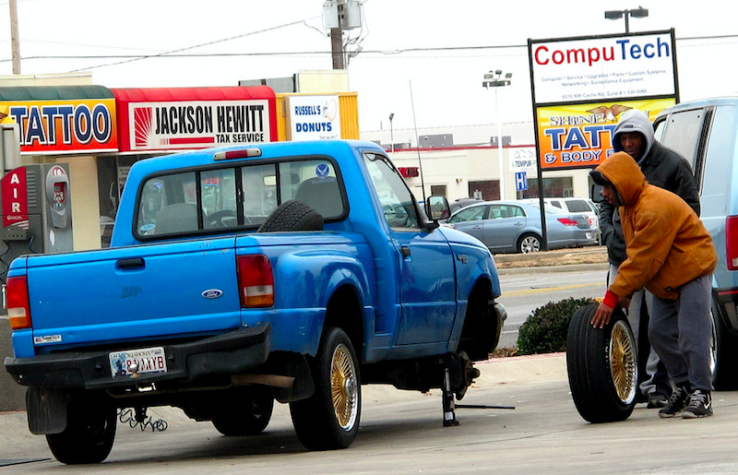Despite the overall progress of car technology, the number of vehicles breaking down is on the rise. According to the American Automotive Association (AAA), 32 million drivers had to be rescued in 2015, a 10% increase over 2014’s 29 million calls for assistance. Vehicle miles traveled in the U.S. increased just 3% from 2014 (2.98 trillion miles) to 2015 (3.06 trillion miles).

As of last year, the top three roadside service requests remain dead batteries, flat tires, and vehicle lockouts. Image source: Tech Crunch.
So what were the main causes for these breakdowns? Plenty of flat tires were reported, but there were also complaints of electronic keyless ignitions that sapped batteries and more.
AAA’s study showed that newer cars less than five-years-old have a disproportionately high number of tire, key, and fuel-related issues (meaning the tank goes empty). With these vehicles, a fifth of service calls ended with a tow to the shop. Cars between six and 10-years-old were more likely to have battery problems, since batteries typically last three to five years.
In total, the top three roadside service requests remain dead batteries, flat tires, and vehicle lockouts. With the last of these issues, it was found that some remote keys won’t let you lock the car and walk away unless the key is outside the car.
When it comes to remote key fobs being left inside the car, issues may stem from the key communicating with the vehicle. The car may keep more electronic modules from going to sleep or suspend mode. This is especially the case when the key is left in the car overnight, accidentally, or by design so it isn’t misplaced.
However, managing director of automotive solutions for AAA, Cliff Ruud, doesn’t believe all the blame should be placed on new automotive technology. “Despite advanced warning systems [low-fuel lights and miles-to-empty displays], more than half a million drivers ran out of gas last year,” he said, chalking it up to human error.
The survey also found that high-tech driver assists don’t appear to have an impact on AAA’s service calls. Even if there’s a failure of adaptive cruise control, blind spot detection, or lane departure warning, the car still runs, meaning you can still get home if the heads-up display fails.
According to the survey, the peak season for roadside assistance calls is during the summer, with 8.3 million calls, followed by winter with 8.1 million calls. Fall came in third with 7.8 million calls, and spring brought in 7.7 million calls.
The survey’s results concluded that Monday is the most common day to call for roadside assistance.
Source: Tech Crunch
Advertisement
Learn more about Electronic Products Magazine





